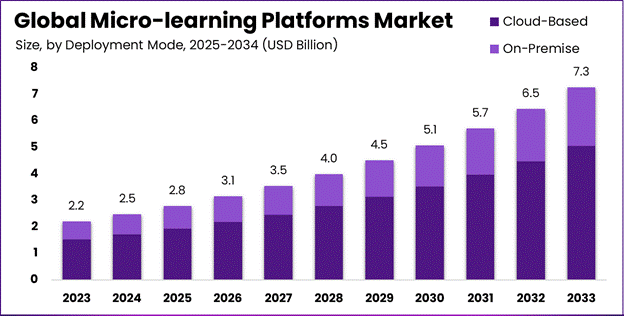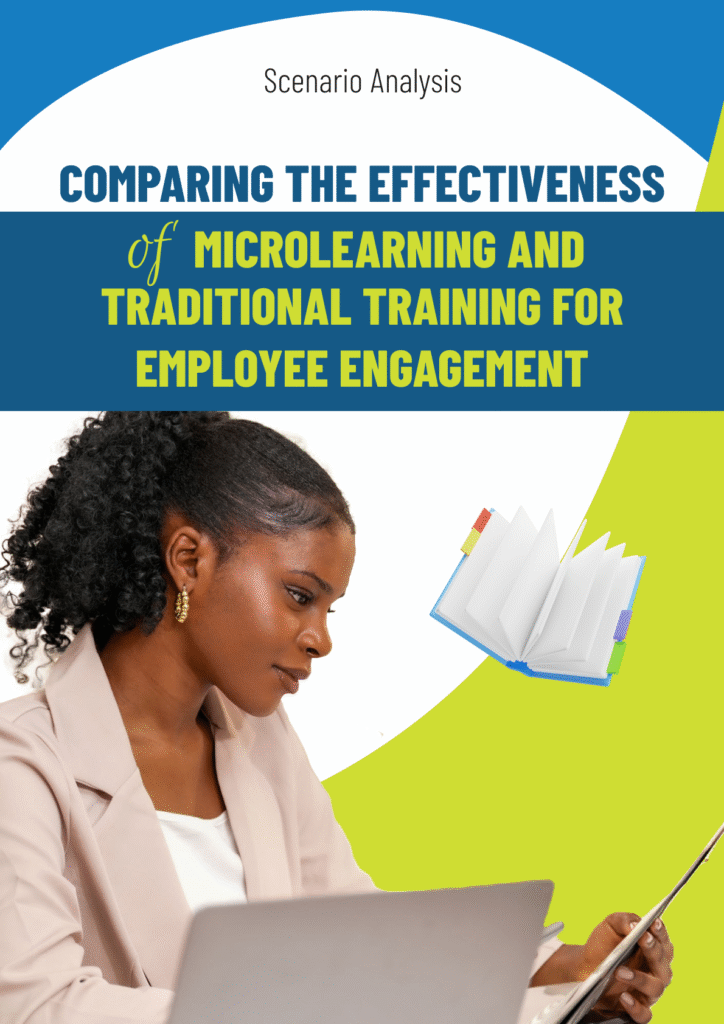
Source: MDPI
Employee engagement—encompassing motivation, commitment, and performance—is closely linked to how learning experiences are designed and delivered. Learning systems today fall broadly into three categories:
- Traditional Training: Characterised by instructor-led, classroom-based or synchronous virtual sessions that often run for several hours or days. These sessions promote structured discussion and hands-on learning, but can be time-intensive.
- Microlearning: Consists of short, highly focused learning units (typically 3–10 minutes) delivered through digital channels such as mobile apps, emails, or chatbots. It integrates learning into daily workflows and capitalises on repetition for retention.
- Blended Hybrid Models: Combine the structure and social interaction of traditional training with the flexibility and continuity of microlearning. This approach merges face-to-face sessions with digital reinforcement spread over time.
This report presents an expanded scenario-driven comparison of three core learning methodologies—traditional training, microlearning, andblended hybrid models—focusing on their effectiveness in fostering employee engagement within organisational contexts. Each learning method is explored through illustrative workplace scenarios that bring its operational realities, advantages, and constraints to life.
The following sections analyse how each approach influences engagement, motivation, and learning outcomes through representative organisational scenarios.
Scenario Analysis 1: Traditional Training in Practice
In a large organisation conducting an annual leadership development retreat, over 100 managers gather for a two-day programme. Day one features keynote speeches, group exercises, and panel discussions. Day two concludes with action-planning workshops and reflective sessions. While the event inspires collaboration and shared purpose, fatigue begins to surface, and the intensity of the content results in cognitive overload.
Merits:
- Enables in-depth exploration of complex or sensitive topics such as leadership ethics or strategic decision-making.
- Facilitates real-time interaction with facilitators and peers, encouraging open dialogue and mentoring relationships.
- Builds a sense of community and cohesion among participants, strengthening engagement through belonging.
Demerits:
- Time-intensive and costly, with employees losing up to 16 hours of productive work time per session.
- Cognitive overload leads to rapid information decay—up to 70% forgotten within 24 hours without reinforcement (Ebbinghaus, 1885; Murre & Dros, 2015).
- Limited accessibility, often excluding remote or shift-based employees.
- Engagement tends to spike during live sessions but diminishes quickly afterward; follow-up compliance rates typically hover below 50%.
While traditional training fosters interpersonal connection, its rigidity and inefficiency limit its capacity to sustain long-term engagement or behavioural change in modern work settings.
Scenario Analysis 2: Microlearning in Practice

Source: Nikola Roza
In a digitally enabled organisation, compliance and performance training are delivered through a mobile platform. Employees receive daily 3–5 minute lessons—short quizzes, animated explainers, or scenario-based simulations—during natural workflow pauses. Gamified elements such as badges and leaderboards foster friendly competition, while adaptive learning adjusts content difficulty based on progress.
Merits:
- High completion rates, reaching up to 87% compared to 53% for traditional formats (Emerson & Berge, 2018).
- Spaced repetition enhances knowledge retention by up to 80%, this is according to Kerfoot in 2007.
- Seamlessly integrates with daily workflows, reducing disruption and allowing employees to learn at their own pace.
- Encourages continuous engagement, as frequent reinforcement leads to habit formation and skill confidence.
Demerits:
- May lead to fragmented understanding if modules are not sequenced cohesively.
- Depends on self-motivation, requiring managerial support for sustained participation.
- Lacks opportunities for experiential learning or role-play, which some topics may require.
Nonetheless, microlearning’s ability to deliver learning in digestible, repeatable bursts aligns well with modern attention spans and digital-first work cultures, resulting in 20% higher engagement levels within one month of implementation.
Scenario Analysis 3: Blended Hybrid Models in Practice
A learning and development team designs a leadership programme combining both live workshops and ongoing digital learning. The programme begins with a virtual kick-off session to establish expectations and community. Over the next eight weeks, participants engage with short microlearning modules on communication, coaching, and problem-solving, reinforced by discussion boards and practical assignments. The programme concludes with a live simulation where participants apply learned concepts to real-world scenarios.
Merits:
- Combines the depth and collaboration of traditional learning with the accessibility and reinforcement of digital content.
- Promotes long-term retention through spaced reinforcement and contextual application (Deloitte Insights, 2020).
- Studies by Major & Calandrino (2018) show 15–18% higher engagement than using either method alone.
- Encourages ongoing participation, with learners often continuing self-development beyond required sessions.
Demerits:
- Requires strong learning management infrastructure and organisational alignment.
- Can suffer from overcomplexity if programme components are poorly integrated.
- Demands greater upfront investment in design and facilitation planning.
Despite these challenges, hybrid models represent a balanced solution, delivering engagement, flexibility, and measurable learning outcomes in dynamic business environments.
Comparative Effectiveness for Employee Engagement

Source: Brasstacks
When comparing these methodologies, several patterns emerge:
- Attention Span Alignment: Microlearning aligns best with modern learners’ limited attention spans of 8–10 minutes, while traditional training often exceeds 30–60 minutes per session, reducing retention (Bradberry, 2015).
- Retention and Transfer: Blended learning leads with 82% knowledge application after 90 days, followed by microlearning at 74%, and traditional training at 51% (ATD Research, 2021).
- Scalability and Accessibility: Microlearning and blended models outperform traditional methods in reaching distributed or remote workforces, as they are flexible and platform-independent.
- Cost-Efficiency: While initial setup costs for digital modules can be higher, microlearning’s reusability and scalability result in long-term savings compared to recurrent in-person training costs.
- Engagement Sustainability: Microlearning sustains attention through immediacy and gamification, while blended approaches enhance relevance through contextual learning touchpoints.
Conclusion

Source: Market.us
While traditional training retains importance for complex, interpersonal, or highly regulated topics, its limitations in flexibility and retention make it less suited to today’s agile work environments. Microlearning emerges as the most effective learning paradigm for sustaining employee engagement—delivering agility, accessibility, and continuous reinforcement that align with modern workforce dynamics. Blended hybrid models further enhance outcomes by combining the best of both worlds, ensuring that learning remains both scalable and human-centred.
Organisations seeking to build resilient, engaged, and high-performing teams should therefore adopt a microlearning-first strategy, reinforced by blended integration for strategic capability development. This approach not only future-proofs learning ecosystems but also positions organisations to thrive in an era of constant change.
How Proten International Can Help
To explore how microlearning and blended learning strategies can be tailored to your workforce, contact Proten International at info@protenintl.com or visit www.protenintl.com to schedule a consultation with our HR Advisory team. Together, we can design a learning ecosystem that transforms employee potential into sustained organisational performance.



